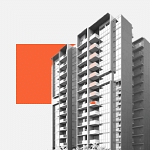MASS-MARKET condominiums are the most common type of private housing transacted, making up about half of all condominiums sold in Singapore. Hence, this market segment has a significant influence on the price trend and market dynamics of the rest of the private housing market.
In this report, mass-market condominiums refers to all types of private residential non-landed properties (excluding executive condominiums) located in the Outside Central Region (OCR). These condominiums are typically gated developments with facilities such as private security, car parks, landscaping, swimming pools, gymnasiums and other recreational facilities.
Price trend
After declining for about four years from 2013 to 2017, the prices of private housing started to recover in Q3 2017. In the past five years, the OCR private non-landed residential property price index increased by 39.8 per cent, outperforming the 34.3 per cent growth rate of the island-wide private non-landed housing price index. The OCR condominium price expansion was especially robust from late 2021 to the third quarter of 2022, when it was partly fuelled by the steady rise in Housing and Development Board (HDB) resale flat prices.
Some HDB flat owners profit from the growing prices of public housing by selling their flats to upgrade to private residential properties. In the past three years, the HDB resale housing price index increased by a healthy 30.7 per cent. The real estate preferred by most HDB upgraders is the mass-market condominium.
However, the recent cooling measures introduced by the government in September 2022 deflated the growth momentum of OCR condominium prices, leading to a 2.6 per cent quarter-on-quarter (qoq) contraction in the OCR non-landed housing price index in Q4 2022.
Rental trend
Over the past five years, the rentals of non-landed residential properties increased even faster than prices. The overall private non-landed housing rental index expanded by 45.2 per cent from Q4 2017 to Q4 2022, faster than the 34.3 per cent rise in the price index of such properties.
The fastest rate of increase is that of the rental index of non-landed housing in the OCR, at 55.9 per cent over the past five years. This has been a boon for suburban condominium landlords and a bane for tenants.
The current state of the leasing market has also contributed to the demand for residential properties among investors to capitalise on the high rental rates.
Market size
Among the three private non-landed property market segments, the mass market segment is consistently the largest sector in the past 19 years in terms of the number of housing units transacted. This is mainly because the OCR is the largest of the three market segments geographically, comprising four of the five regions in Singapore. The Core Central Region (CCR) and Rest of Central Region (RCR) occupy the Central Region, while the OCR consists of the other four regions, resulting in the OCR occupying the largest land area.
In addition, the majority of the residential development sites sold by the government in the past decade are located in the OCR. The government is the biggest seller of development land. Many of the larger condominium projects, with more than 300 units each, are built on Government Land Sales sites located in the suburbs. As a result, there are more suburban condominium units transacted.
Who are buying?
Most HDB upgraders tend to gravitate towards purchasing suburban condominiums, rather than private housing in the other segments. Based on private housing transactions in 2022, the prime CCR market has the smallest proportion of buyers with HDB addresses, at 17.8 per cent. Meanwhile, the proportion of buyers with HDB addresses buying condominiums in the RCR is higher, at 33.2 per cent.
However, 45 per cent of the buyers of mass-market condominiums are HDB upgraders, which means that more than half of the buyers of condominiums in the OCR already live in private housing. This dispels the common misconception that HDB upgraders make up the majority of the buyers of private housing in the OCR.
The key reason why HDB upgraders prefer mass-market condominiums is that they are the most affordable type of private housing. The transacted prices of a typical 3-bedroom unit in 2022 in the primary market ranges from S$1.23 million to S$2.6 million. In per square foot (psf) terms, the prices of such condominium units vary between S$1,200 psf and S$2,323 psf, while the prices of condominium units of similar sizes in the CCR and RCR range from S$1,633 psf to S$3,830 psf.
In addition, some buyers with HDB addresses may prefer to move to a condominium in the same or nearby HDB town due to a sense of familiarity with their neighbours and environment. This could be observed in the strong take-up rate of new launches in the OCR market last year.
Conclusion
Mass-market condominiums serve to meet the upgrading aspirations of HDB flat owners. The demand and prices of such condominiums are supported by firm market fundamentals such as demand from HDB upgraders and investors, fuelled by rising HDB resale prices and median household income.
About 30 to 40 private housing projects are expected to be launched in 2023. An estimated 30 per cent of the private residential units in these developments are located in the OCR. This could satisfy the demand for new private housing in the OCR without resulting in a glut.
Nicholas Mak is head of research & consultancy; Tiffany Lim is senior analyst at ERA Realty Network.




